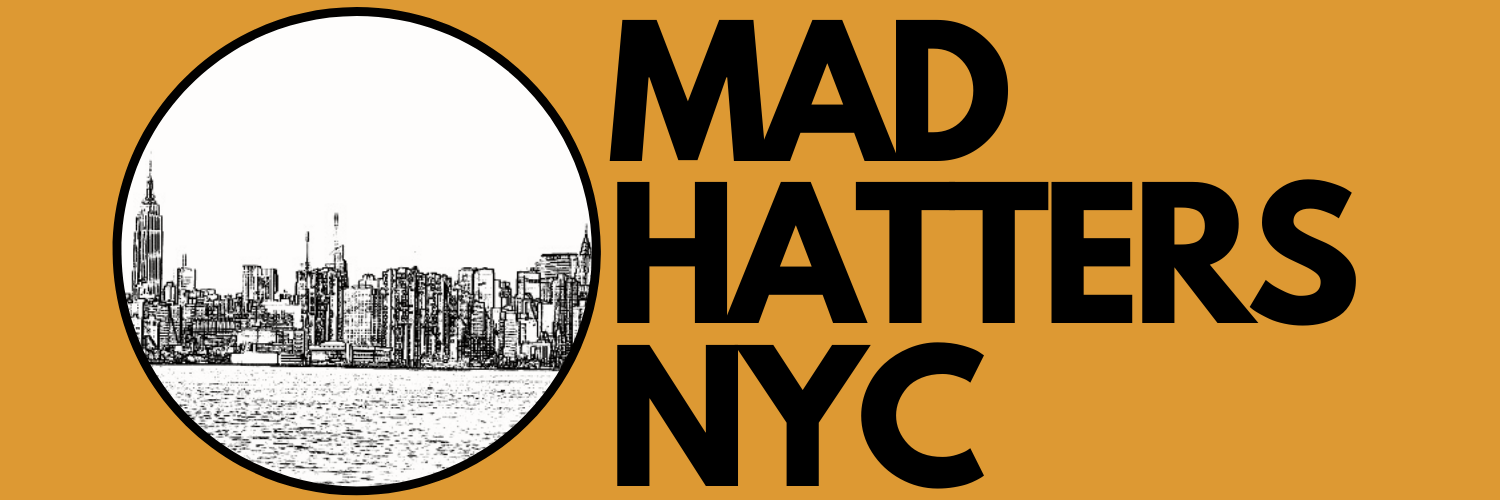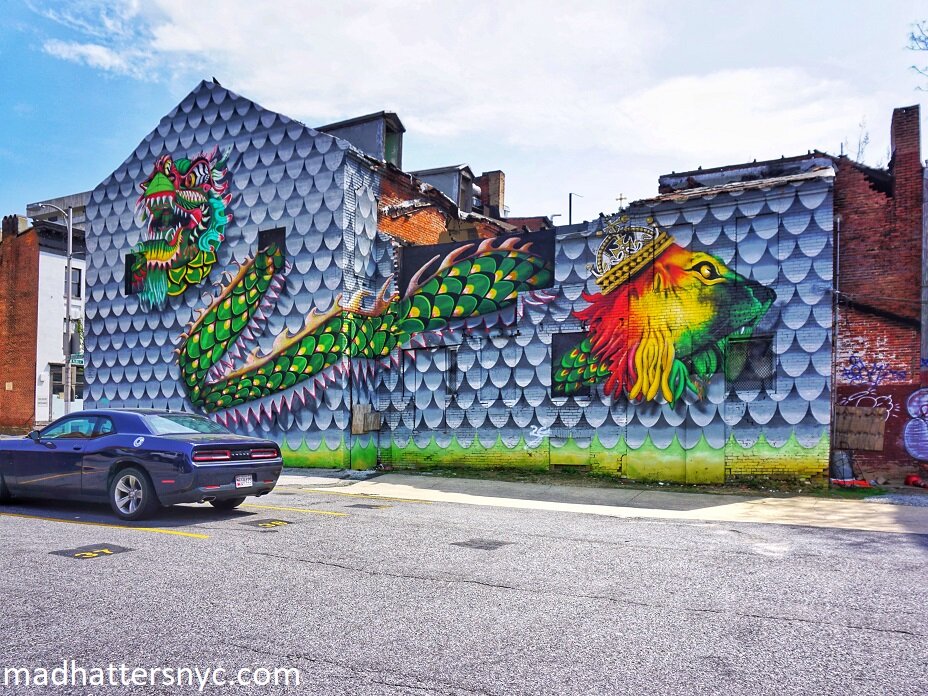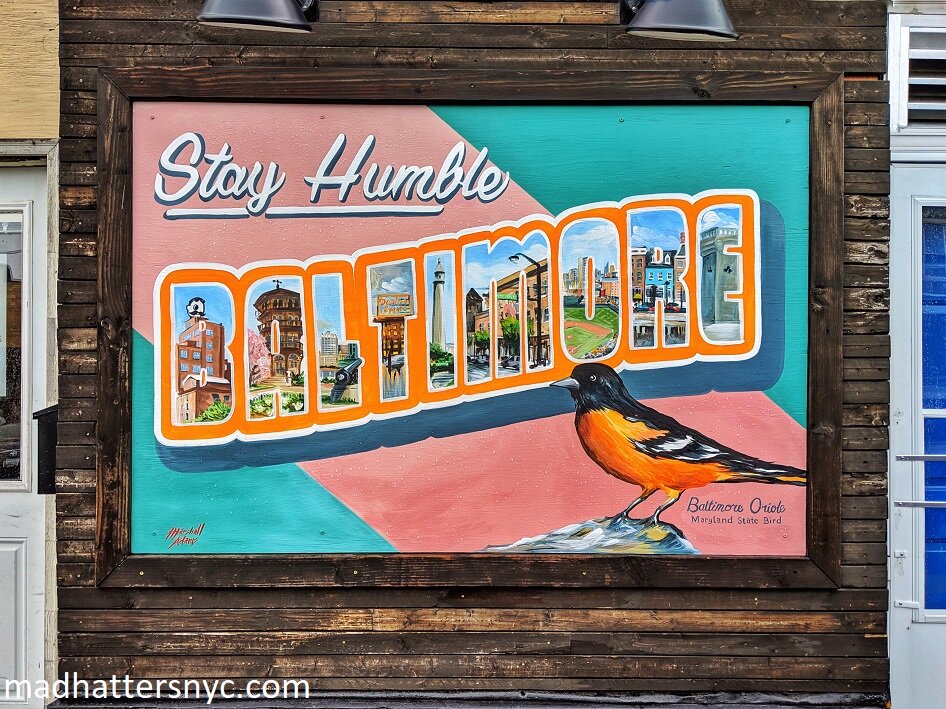A Graffiti Lover's Guide to the Best Street Art and Murals in Baltimore
Did you know that Baltimore is a city with a legacy of firsts? It was the birthplace of the National Anthem. It lays claim to the first Washington monument (not Washington DC!), the first telegraph line, the first regular railroad passenger service, the first cathedral, and the first United States post office system. Its maverick, innovative spirit has been making waves since its humble beginnings as one of the original thirteen colonies. During the era of slavery, Baltimore was one of the few states home to more free blacks than slaves. That same independent streak and irrepressible spirit can be seen to this very day in its institutions, its communities, and, yes, even in its prolific street art.
Where to Find the Best Murals in Baltimore
When we put together our Baltimore travel guide, we knew we’d have to dedicate an entirely separate article to its street art scene. If you’re a graffiti lover heading to Baltimore and you’re wondering where you can find cool murals, the answer, quite simply, is everywhere. But we made a list of our favorite spots anyway. These neighborhoods don’t just have a high concentration of amazing Baltimore murals, they are worthy destinations in their own right.
Mount Vernon
A National Register Historic District, Mount Vernon is home to many of Baltimore's most prestigious cultural institutions. You'll find libraries, museums, institutes, historic structures, theaters, and more. These structures provide an incredible backdrop for some of the city’s best murals. We found one of our favorite pieces from our entire trip in a parking lot at Park Avenue and West Franklin Street. Artist Jeff Huntington, who works under the moniker JAHRU, captured elements of the neighborhood’s past and present in a striking mural depicting a dragon and a lion.
After World War II, Park Avenue was home to Baltimore’s Chinatown, which was filled with bustling restaurants, grocery stores and community organizations. But over time the Chinese population left the area, and a large Ethiopian community moved in. A stroll along Park Avenue yields an interesting mix of Ethiopian restaurants and pagoda-like structures. The dragon represents power and strength in Chinese mythology, while the Lion of Judah graced the Ethiopian flag from 1941-1974. The two come together beautifully in this striking work.
Elsewhere in Mount Vernon, nestled among some of Baltimore’s charming rowhouses, you’ll also find a larger-than-life tribute to one of Charm City’s icons: actor, singer and drag queen Divine. Fans of John Waters (perhaps Baltimore’s most famous son) will recognize the star from his movies like Hairspray and Pink Flamingos. The mural was commissioned by homeowners Jesse Salazar and Tom Williams. But their home is located in a historic district, and the mural got some unwanted attention from the Commission for Historical and Architectural Preservation. The mural was in violation of its rules, but the owners, the city’s residents, and even John Waters himself, came to its defense. The committee agreed to make a one-time exception, partly because removing the mural could risk damaging its structure--yet another violation of its rules. You can now find the Divine mural residing comfortably at her home on Preston Street.
Station North Arts & Entertainment District
Just north of Penn Station, you'll find Baltimore's first designated arts district, Station North. The special designation, which was awarded in 2002, makes artists and arts businesses in Station North eligible for state tax breaks, including an income tax incentive and a property tax credit. Once a jumble of derelict warehouses, the district has since been transformed into artists' studios and performance spaces for comedy, rap, punk and burlesque shows. Some of its newer residents include the Baltimore Design School for sixth through ninth graders, and the City Arts apartment building which offers affordable-housing units for local artists.
The cultivation of that creative spirit makes Station North a great area to find amazing murals. Baltimore's prolific street artist, Gaia, is the primary curator for Open Walls Baltimore, which is “part public art project, part community revitalization strategy”. The innovative project boasts 38 murals in the area. Murals can be found on warehouses east of the expressway all the way to the residences of the Greenmount West neighborhood. Artists include some of Baltimore’s famous muralists as well as street artists from all over the world. Station North is also where you’ll find Graffiti Alley, a T-shaped alley that lays claim to the only space in Baltimore in which uncommissioned street art is legal. Graffiti Alley is located next to the Graffiti Warehouse, a private shooting space for photographers and videographers accessible only through special events or paid memberships.
Hampden
Known as "The Avenue" by locals and roughly comprised of the five blocks of West 36th Street between Falls Road and Beech Avenue, Hampden is the epicenter of Baltimore's hipster culture. Along The Avenue, you'll find everything from vintage shops and artists' galleries to craft cocktail bars and eclectic cafes in converted row houses. The neighborhood is home to Baltimore’s HONfest, an annual celebration that draws over 35,000 attendees. “HON” is short for “honey”, and is used as a term of endearment for Baltimore’s working women. What started out as a Miss Hon pageant has turned into a campy event worthy of Baltimore’s quirky persona. The partygoers are easily recognizable by their feather boas, cat-eye glasses, leopard prints and generous use of hairspray.
Hampden’s rebellious spirit makes it a natural home for Baltimore’s experimental street art. Artists partner with local businesses to fill spaces with murals of all styles and sizes. From artwork inside popular eateries to colossal works on the side of buildings, there’s much to draw the eye. You’ll also find the recognizable work of Baltimore Love Project on The Avenue. The four hands spelling out the word "love" is the brainchild of local artist Michael Owen. Varying only in size and background, 20 murals spread love all around Charm City.
Jones Falls Expressway
Jones Falls Expressway is a freeway that carries I-83 from downtown Baltimore to the city’s northern suburbs. Every Sunday from April through December, the space beneath the Jones Falls Expressway at Saratoga and Holliday Streets is home to the Baltimore Farmers’ Market and Bazaar. Fresh produce isn’t the only thing you can buy here, vendors offer a myriad of goods from specialty guacamole to homemade donuts. But another great reason to visit the space is to check out the expressway’s painted columns, which were commissioned as part of the Baltimore Mural Program through the Baltimore Office of Promotion & The Arts. Each column carries a unique design, along with a plaque featuring the artist’s information.
Baltimore Street Artists You Need to Know
As you wander through Baltimore’s neighborhoods, you might start to recognize the work of some of Baltimore’s popular muralists and street artists. We certainly did. Here are some local talents you should definitely keep an eye out for:
Ernest Shaw, Jr.
There's no better place to start our exploration of local artists than Ernest Shaw, Jr. He's a West Baltimore native, and his work is largely inspired by his personal experiences growing up there. His murals focus on confronting "negative, degrading, denigrating and stereotypical images that falsely depict African people," while simultaneously illustrating the beauty of peoples of color. You can find examples of Mr. Shaw's public commissions in various places around the city, such as his famed Malcolm X, James Baldwin, and Nina Simone mural at E. Lafayette Ave and Barclay St, or in a much more private setting, on the walls of Ida B.'s Table.
Jessie & Katey
A Baltimore-based artistic duo, Jessie Unterhalter and Katey Truhn met while studying at the Maryland Institute College of Art (MICA) and began their mission to transform public spaces back in 2011. Their distinct use of bold colors and shapes, movement, and symmetry immediately draws the eye and connects you with the architectural surfaces of the environments in which they work. Jessie and Katey often break the limitations of form, extending beyond corners or spilling on to the ground. They also have a habit of introducing dynamic elements to their work, like woven textiles, an example of which can be seen in their mural at their alma mater. Jessie and Katey have won grants and commissions and exhibited their works in cities as close by as Baltimore and far away as Moscow.
Gaia
Gaia was born Andrew Pisacane in the Upper East Side neighborhood of New York City. His moniker is derived from Greek mythology--the personification of Earth, the ancestral mother of all life--and ostensibly represents his keen interest in the ambivalent relationship between nature and humanity. Gaia began his work in high school, with wheatpastes in New York City street art hotspots like Bushwick, Williamsburg, and Chelsea. A number of years later, he relocated to Baltimore to attend MICA. His work, from traditional exhibits and installations to large scale murals, have been exhibited and commissioned around the globe.
Gaia is the artist behind the Divine mural in Mount Vernon, and his work often casts a light on social issues. His mural in the Remington neighborhood is based off a 1908 Lewis Hine photograph, one of many documenting immigrants arriving at Ellis Island. Gaia said of the mural, “My great grandfather came to this country and started a garbage business. One hundred years and four generations later, it is important to remember that migration is a human right.”
Peter the Pole Painter
For street art in its truest form, you need not venture farther than a few blocks of Remington Avenue and Keswick Street in the Baltimore neighborhood of Hampden. There you'll find the uncommissioned works of Peter the Pole Painter, who appropriated approximately eighteen street light poles and adorned them with intricately hand-painted enamel designs. He has no business card and no Instagram account. He has no ambitions, other than to spruce up the neighborhood he calls home. Peter the Pole Painter is a perfect example of traditional, unsanctioned street art with the simple aim of beautifying a neighborhood.
In conclusion
We've made the statement before that the greatest attribute of street art is its ability to start a conversation directly with the populace. Some of these conversations are whimsical, others more serious and formidable. Baltimore is a city that has known the highest highs and the lowest lows. That experience gives its artists a unique and enduring perspective, with a reputation for independence, innovation and a whole lot of charm.
Like it? Pin it!













